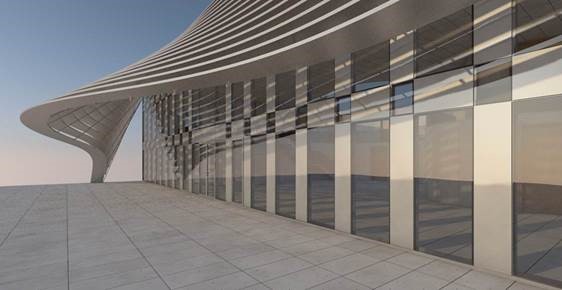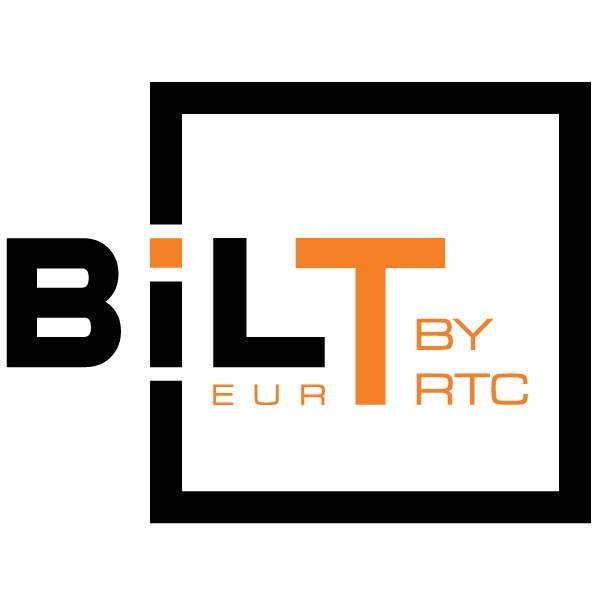The BIM ecosystem and the integration of parametric design for sustainability at early design stages

Buildings have a huge impact on the planet. According to the U.S. Green Building Council (USGBC), buildings account for an average of 41% of the world’s energy use. This number is confirmed by the UN in it’s Global Status Report where it’s predicted that over the next 40 years, the world is expected to build 230 billion square metres in new construction – adding the equivalent of Paris to the planet every single week. The two next biggest energy consumers, don’t even come close with the industrial sector accounting for 30% while transportation accounts for 29%. Part of this is due to the huge amount of electricity that buildings use. In the United States, buildings are responsible for 73% of the country’s electricity consumption for example.
While the building sector’s energy intensity has improved in recent years, this has not been enough to offset rising energy demand. Building-related CO2 emissions have continued to rise by around 1% per year since 2010, and more than four million deaths each year are attributable to illness from household air pollution. (UN Global Status Report)
Fortunately, many opportunities exist to deploy energy-efficient and low-carbon solutions for buildings and construction.
Designers play a crucial role in the mitigation of this process and result. The ASHRAE GreenGuide states and confirms that the very early stages of the design process are the most important. The design process is the first crucial element in producing a green building. Without a clear definition and goal, the the latter stages become completely compromised. For design efficiency, it is necessary to define the objectives and criteria, including sustainable/green goals, before beginning the design, to minimize the potential of increased costs. Designers are often challenged and sometimes affronted by the idea of green design. Achieving green or sustainable design goals requires a different approach than has been customarily applied. Still based on the ASHRAE GreenGuide, some have expressed the view that significant reductions in energy usage and greenhouse gas emissions will never occur by simply tweaking current practice.
The act of designing, conceiving, constructing and living in a building, i.e. its life-cycle, involves in all its phases a complex process of coordination between people, ideas, solutions, materials and energy. The essence of success is to ensure that this data and information that is produced within each stage is understood and processed by all parties with the purpose of obtaining the best solution. The more fluid this flow is, the faster and more efficient the process will be. The “ideal” building is conceived as the one that best answers the formal, material, programmatic, functional, economic, sustainable and structural questions, bringing together a group of specialists from the most diverse areas and all the corresponding information.
During this process, the design team challenges all types of available and possible solutions, and finds the one most fit for purpose. For example looking at material issues with a solution that has the least impact combined with energy issues and a solution that is the most energy efficient.

BIM softwares are incorporating tools that allow the validation and analysis of solutions from the early stages. If the design stage is responsible for a larger percentage of efficiency in the final result, the first stages of design are also a crucial part of this process. It can become extenuating to analyze and validate each solution found in the form finding process. The form of a building is the basis for the energy efficiency of the building. It represents the envelope and shell, the interface between the interior and exterior and the support for energy capture and generation.
This process, to be taken seriously under sustainable principles can be extenuating and frustrating, since it results in a process of trial and error containing a lot of variables and constraints. Even with the tools available the design team can’t determine the best and most efficient outcome. This is where parametric and generative design systems can be incorporated.
BIM softwares such as ARCHICAD now allow the integration and real-time incorporation of parametric and generative design systems, establishing a bridge with programs such as Grasshopper. This step opens a door in the creative field but also in the search for solutions based on algorithms, establishing geometric and mathematical rules that were previously beyond the reach of designers in the BIM environment. The possibilities are as diverse as the creativity of the minds that think and build them.
Parametric design allows very interesting results from the plastic and formal point of view, however, it also allows the solution of geometric problems that the BIM systems struggle to materialize. The optimization of solutions can be raised to a level of accuracy and complexity that only programming and computing allow. We can program for sustainability according to the need and means available.
Incorporating these systems into the BIM environment is a new approach that differentiates the design process from the current methodologies. It involves a novel mindset and perspective on the design process, including data, geometry and processes that be automated or manually edited. The tools that arrive with this fusion allow the analysis and validation as well as the search and optimization to be clear, automatic and fast.

Recurring to various optimization algorithms and incorporating them into the main script enhances the design possibilities and ensures solid solutions.
From the early stages of the process, the project team can incorporate information that solves these issues without leaving it’s native environment. This means the ideas, concepts and intentions within the BIM model are not compromised, resulting in work processes and conscious solutions driven by information and concrete data in search of a more humane result.
Correct orientation and correct selection of facade solutions can reduce heating, ventilation, and air conditioning (HVAC) equipment size and cost, resulting in a more efficient and sustainable building. Buildings that effectively combine their surroundings with the application of green design principles generally provide a project with greater psychological and physiological benefits for the occupants.
BIM and parametric design flux to ensure sustainability though “a different approach than has been customarily applied”, as an answer to “ significant reductions in energy usage and greenhouse gas emissions will never occur by simply tweaking current practice” like stated in the ASHRAE GreenGuide, and we need to consider a different mentality to truly changing the industry and make our building more efficient and sustainable for the future.
This year at BILT Europe in Edinburgh on October 10-12, one of the many classes that will be held is a hands-on lab workshop to explore Sustainable Building Design through BIM and Parametric Methodologies, which will be led by Pedro Santiago. To register for the event and register for this class. Visit the website
Written by Pedro Santiago, Senior Partner at PSPV Arquitectos Associados












